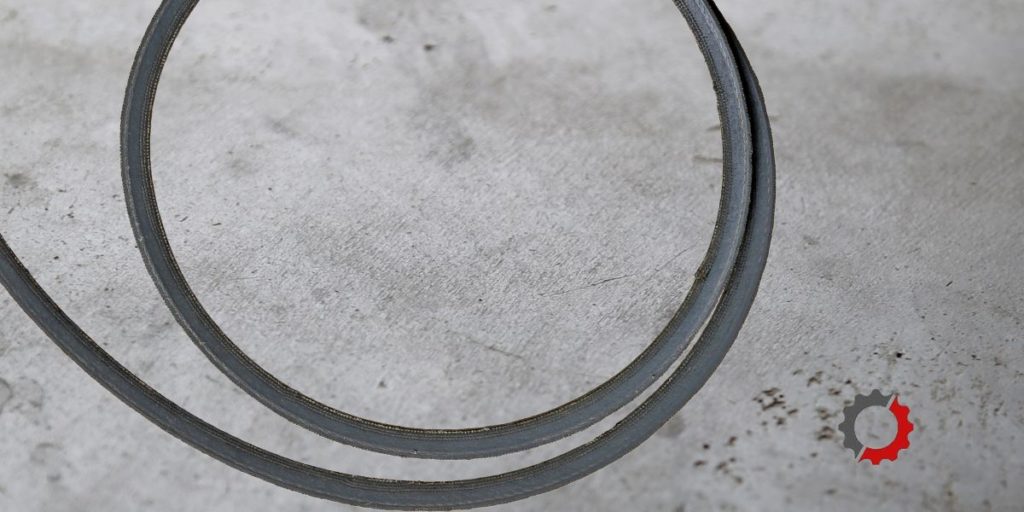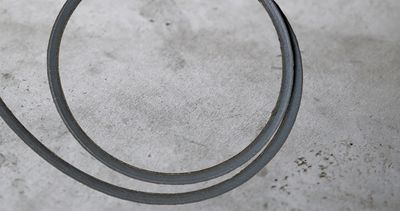No matter what you do to your lawn mower, you’ll never get it to run without a little vibration. When the engine is running, you’ll feel a little vibration.
The amount of vibration may also feel worse with an uneven lawn. However, there are items on the mower that can fail and cause a significant vibration that must be dealt with.
A Ferris lawn mower may begin vibrating and shaking when the engine mounting bolts are worn, loose, or missing; the PTO clutch is failing; the mower blades are wrong or unbalanced; the spindle housing is damaged; the bearing has failed in the pulleys; the belt is worn; bearings are bad, or debris is lodged in the mower.
Before looking for the vibration you need to remove the ignition key, and spark plug wires and wait for all parts to stop moving. Follow all safety precautions in your operator’s manual including wearing safety gear.

This post may include affiliate links. Purchases made through these links may provide a commission for us, at no extra cost to you. As an Amazon Associate, we earn from qualifying purchases.
Follow all safety instructions provided in your equipment operator’s manual prior to diagnosing, repairing, or operating.Consult a professional if you don’t have the skills, or knowledge or are not in the condition to perform the repair safely.
Reasons a Ferris Lawn Mower Keeps Vibrating and Shaking
Worn or Missing Engine Mounting Bolts on a Ferris Mower Causes Vibration
It’s normal to feel the vibration from the engine, but it can feel pretty extreme when the engine mounting bolts break, become loose, or go missing. These bolts, often referred to as motor mounts, are installed under the engine to absorb much of the engine vibration.
Inspect the bolts and make sure they are in good condition and securely in place. Tighten any loose bolts. Replace bolts if they appear worn or are missing.
Failing PTO Clutch on a Ferris Mower Causes Vibration
The PTO (Power Take Off) clutch transfers power from the engine to the blades. The ball bearing may fail on an electric clutch causing your mower to shake. The PTO clutch should be replaced.
Incorrect or Unbalanced Ferris Mower Blades Cause Deck Vibration
Installing the wrong blades or unbalanced blades on your Ferris lawn mower can cause a vibration.
Wrong size Ferris mower blades:
Ferris offers mower blades designed to fit their mower decks. There are some aftermarket companies that offer blades that may fit the mower, but there are many blades that don’t fit. Even if you have the right blade length and center hole size, they still might not fit correctly.
A wrong blade may not only cause vibration, but it can also cause damage to the mower deck shell and spindle housings. Because of this, I prefer to use OEM (Original Equipment Manufacturer) blades to ensure it fits well and does not cause harm to my zero-turn.
Verify you are using the right blade for your Ferris lawn mower deck model and size.
If you do choose to use an aftermarket lawn mower blade, I recommend matching the OEM to the aftermarket blade by placing a new OEM blade on top of the aftermarket blade to ensure the center hole size, length, and width all match.
Just because an aftermarket manufacturer states their blade fits your Ferris lawn mower model doesn’t always mean it does. I’ve ordered aftermarket blades for customers where the manufacturer states the blades matched only to find they did not once I received them.
Unbalanced Ferris mower blades:
Blades can become unbalanced and no longer spin evenly under the deck. They will begin to wobble as they spin. At very high speeds, you will feel a significant vibration.
An unbalanced blade is a blade that is heavier on one end of the blade than the other. There are a couple of different items that cause a mower blade to become unbalanced.
- Normal Use: Dirt rotating under the mower deck can wear the blades unevenly.
- Blade Sharpening: Too much metal is removed from one end of the blade than the other.
Make sure your Ferris blades are balanced using a blade balancer before you install blades on your mower. Find out more about sharpening and balancing your blades here.
Material Wrapped Around a Ferris Mower Blade Spindle Causes Deck Vibration
Wire, string, and even long weeds can wrap around the blade spindle causing your Ferris mower to start vibrating. These are difficult items to see when you’re mowing so they are hard to avoid.
Inspect the spindle and remove any items that are wrapped around it. Once this is done, check your spindle and spindle housing for further damage.
Damaged Spindle Housing Components on a Ferris Mower Causes Deck Vibration
A bent spindle or worn bearings in the spindle housings can cause the blades to wobble when you engage your blades causing vibration in your Ferris mower deck.
Before you check your spindle housing for damage, put on a good pair of work gloves to protect your hands from the sharp edges of the mower blade. Make sure the spark plug wires are disconnected and the key is removed from the ignition.
Grab a hold of each end of the mower blade and rock it up and down. What you’re doing is looking for any movement. You may hear a knocking sound from the extra movement.
If you feel movement, remove your mower blade and spindle housing. Inspect the bearing or spindle for damage and repair or replacement.
Worn Mower Deck Belt on a Ferris Mower Causes Deck Vibration
When a mower deck is worn and stretched leaving some slack, the belt will not sit securely around the pulleys.
This extra slack as the belt moves around the deck can cause your Ferris mower deck to vibrate. Replace a worn belt if you find it is stretched, cracked, or has a glazed appearance.
If the belt appears in good condition, make sure it is routed around the pulleys correctly and the tension is adjusted to remove extra slack.
Bad Pulley Bearings on a Ferris Mower Causes Deck Vibration
A vibration in the mower deck can be felt through your Ferris mower when you are using bad pulleys. The bearings can fail causing the pulleys to not sit securely flat and parallel to the deck.
When the pulleys are not sitting parallel to the deck and have some movement to them, the mower will shake as your belt runs around the pulleys.
Check each pulley to make sure it is securely attached to the deck and doesn’t have a wobble to it.
You don’t want a lot of movement in the pulley where one side of the pulley sits higher off the deck than the other. When this happens, you most likely have a bad bearing on the pulley.
Find a failing bearing by slowly rotating each pulley by hand. Feel for a restriction and listen for bearing noise. If you experience either of these, your bearing must be replaced.
Note: Some pulleys will only use sealed bearings. In this case, you will have to replace the pulley and bearing assembly.
Worn Idler Bracket & Spring on a Ferris Mower Causes Vibration
A loose or worn idler bracket or spring can make a Ferris mower deck vibrate. The hole in the bracket, where the spring attaches, can wear larger or the spring can become stretched.
Replace a worn idler bracket or spring. Check the bearing and bushing in the engagement linkage and replace them if you find they are worn.
Debris Lodged in a Ferris Mower Causes Vibration
When mowing with your Ferris, debris gets kicked up from the lawn. Small debris stuck in the crevices of the mower can cause the mower to shake. Something as small as a wood chip can cause a severe vibration to be felt.
Remove your spindle covers and clean off your deck regularly. Debris can collect under your pulleys and cause them not to sit flat and parallel to the deck.
Debris buildup can affect the tensioner where it is no longer able to keep proper tension on the belt. This will cause extra slack and your mower deck to shake. It may even cause the belt to come off the mower.
Look every part of your mower over carefully and remove any items that are lodged in your mower. It is best to clean your zero-turn after each mowing to keep it free of debris not only to prevent vibration problems but also corrosion from the debris holding moisture.
Need help with cleaning procedures? Check out “How to Clean Your Mower for Best Performance“.
Still Having Problems with Your Ferris Lawn Mower?
No matter what type of mower you own, you will run into problems during its life.
Because of this, I have compiled a list of common Ferris lawn mower problems and solutions to help you troubleshoot the next time your mower doesn’t start, keeps dying, has a bad cut, is overheating, or has another issue.
This is an excellent guide to bookmark so you can refer to it when you need help finding and fixing your mower. You can find this guide at Common Ferris Zero Turn Mower Problems and Solutions.
